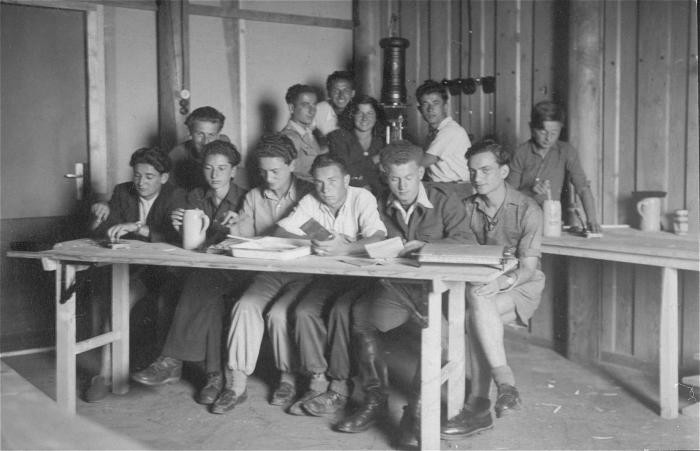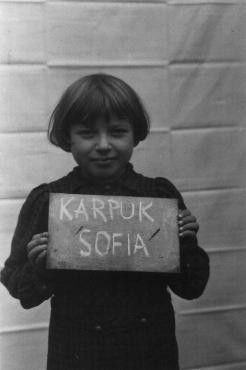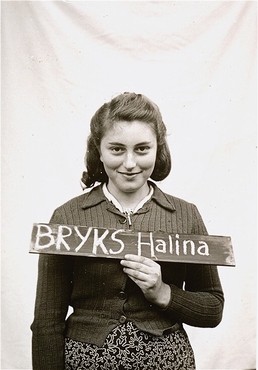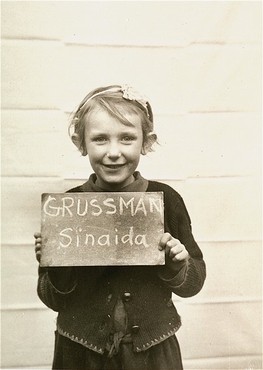
Kloster Indersdorf Displaced Persons Camp
For the Jews who survived the Holocaust, the end of World War II brought new challenges. Many could not or would not return to their former homelands, and options for legal immigration were limited. In spite of these difficulties, these Jewish survivors sought to rebuild their shattered lives by creating flourishing communities in displaced persons camps in Germany, Austria, and Italy. In an unparalleled six-year period between 1945 and 1951, European Jewish life was reborn in camps such as Kloster Indersdorf.
Indersdorf was a displaced children's home in the Bayern town of Kloster Indersdorf. Located between Dachau and Augsburg, Indersdorf was part of the Munich district of the US zone of occupation. The initial Jewish community in Indersdorf was made up of children who had hidden as non-Jews during the Holocaust.
Establishment and Early Months
Located in a twelfth-century monastery and former girls' boarding school, Indersdorf functioned as an international youth shelter until the UNRRA (United Nations Relief and Rehabilitation Administration) designated it as a displaced persons (DP) camp; it opened in July 1945.
By mid-September, 1945, 192 boys and girls from thirteen nations, including 49 Jewish children, were sheltered at Kloster Indersdorf, more than double what had been anticipated. Over the next year, the numbers increased to over 300.
The care of the children was provided by a staff of more than a dozen UNRRA workers as well as Catholic nuns. As the population in the camp grew, German refugees were employed to work in the gardens, kitchen, laundry, and as nurses and seamstresses. Adult DPs were also pressed into service caring for the children.
While most of the Jewish children arriving in the early months had been in concentration camps (and many had been liberated from Flossenbürg concentration camp), the non-Jewish children came from several sources: some had been brought to Germany as forced laborers or the children of such laborers; others had been kidnapped in Eastern Europe by the Nazis as “racially suitable;” yet others had been orphaned by the war or were offspring of women who had been raped or been impregnated in the Lebensborn camps. Most of the children, Jewish and non-Jewish, had experienced horrific physical and/or mental traumas and arrived at the DP camp with a variety of illnesses—scabies, malnutrition, TB, diphtheria—as well as emotional scars. If a child carried identification papers, their information was forwarded to the Central Tracing Service in Frankfurt; in many cases, a child’s name or place of origin or native language was revealed only after s/he became healthier and more secure.
Life in the Camp
Children were given a good deal of freedom as an antidote to their previous lives. They were allowed to choose their own clothing, for example, and to decorate their rooms as they wished.
Many had an intense need to tell their stories. Conflicts of various kinds arose among the different groups: between male and female children, between Jewish and non-Jewish children, among children of varying ethnic groups, and with neighboring Germans.
Despite the resistance of some children to the discipline of school, five hours each day were allocated to education. Teachers were drawn from the staff as well as the local community. Many of the children had few or no literacy skills; they also benefitted from art, music, and gymnastics classes. ORT (Association for the Promotion of Skilled Trades) offered a tailoring class. Classes were often also available in auto mechanics, carpentry, typewriting, nursing, and other vocational skills.
The Jewish residents published a newspaper entitled Uj Elet (Hungarian for “new life”). Many of them collaborated to form Kibbutz Dror, a Zionist youth village and commune. Dramatic performances allowed the children to work through some of the difficult experiences of their past. Kloster Indersdorf also hosted concerts, had a fine library, and encouraged sports. American GIs offered boxing lessons. Separate religious services were offered for the Jewish, Catholic, and Protestant youth.
Repatriation
The UNRRA staff made their best effort to repatriate the children, to seek out parents or relatives who may have survived, or to arrange for foster families. For example, in October, 1945, Great Britain invited fifty Jewish refugees to live with such foster families. Other children sought passage to the United States and some Jewish children emigrated to Palestine.
In July/August 1946, the Children’s Center moved to Prien on Chiemsee, where several hotels were requisitioned to create a new DP camp. Kloster Indersdorf then became exclusively a Jewish children’s home. During the time that it was open, over 300 young Jewish DPs lived in Kloster Indersdorf. It closed in September 1948.
Critical Thinking Questions
- What challenges did survivors face in the DP camps?
- What challenges did the Allies face in establishing and supervising DP camps?
- What responsibilities do (or should) other nations have regarding refugees from war and genocide?




